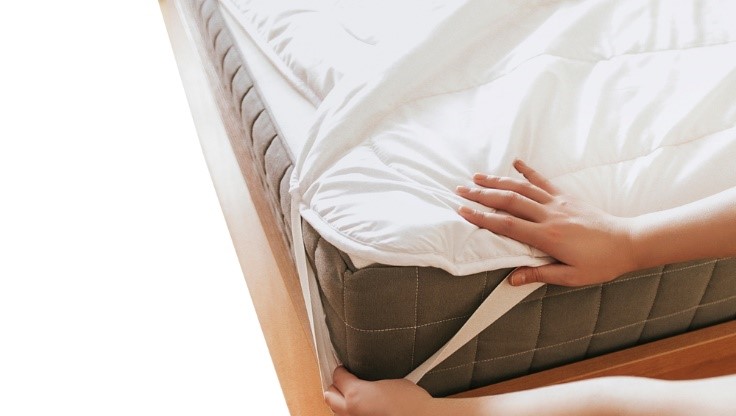
Dust mite is an organism that is present in every household environment but easily get unnoticed because of its tiny size. People pay attention to it mostly because someone in their household starts having frequent running nose and allergy out of the blue. Though dust mite allergy is commonly mild, it can be very annoying. To some people, it can cause severe conditions like persistent sneezing, congestion, chest tightness, sleeping trouble and even asthma attack. Regardless how serious is the case, it is beneficial to get house dust mite population under control, and one of the most efficient ways to do it is using anti-dust mite fabrics.
Important information on dust mites
A strategic step before tackling the problem is to understand the biology of dust mites. The two most common species of dust mites are Dermatophogoides farina and Dermatophadoides pteronyssinus. Their life cycle consists of 5 stages and it takes around 1 month for a dust mite egg to develop into an eight legged adult with a size of 300-400 μm. Under favourable conditions, an adult dust mite can live approximately 1 to 3 months. Dust mites feed on detritus like flakes of shed human skin and animal dander. Warm and humid environment is ideal for their growth and bed mattresses, pillows, carpets and upholstered furniture are some favourite places for them at home.
Dust mite allergy is actually a hypersensitive immune system response to the mite faces. A dust mite can produce around 20 faecal pellets every day and these airborne allergens can be inhaled into the body, causing mild to severe allergic reaction like sneezing, coughing, itchy eyes, breathing difficulty and asthma.

Ways to reduce dust mites at home
The best way to deal with dust mite allergy is to prevent exposure, which has to do with reducing the population of dust mite at home. Theoretically speaking it can be done by maintaining the relative humidity below 50% with dehumidifiers, but this may not be very practical for people living in humid areas.
Washing household fabrics like pillows, pillow and mattress covers with hot water and steam cleaning carpets are effective ways to kill dust mites and remove their allergens. Vacuuming is another way to remove dust mites, and vacuum cleaners with features like heat, UV light, vibration and strong suction are tailor-made to accomplish this task.
However, the above methods are neither effective nor applicable to reduce dust mites on mattress, which is usually the most densely populated area for dust mites at home. In this case, a mattress cover made of anti-dust mite fabric is necessary to keep mites away.

How to choose anti-dust mite fabrics that are effective and safe?
There are many so-called “mite-proof fabrics” in the market, but to be really dust mite proof, they have to meet certain standards, and below is the description of authentic anti-dust mite fabrics for your reference:
Tightly woven fabrics (cotton or synthetic fibres) with a thread count greater than 246 threads per square inch and pore size between 2-10 microns are considered to be effective to prevent live dust mites from penetration and block allergens. An anti-dust mite fabric should be able to block 99% of allergen movement and has less than 4% dust leakage. If the pore size is smaller than 6 microns, it may reduce the air permeability of the fabric, which is preferred to be around 2 to 6 cm3/sec/cm2. A more comfortable choice is mite-proof fabric that is also vapour permeable.
However, using authentic mite-proof fabrics for mattress and pillow covers is only the first step to reduce dust mite population in your bedroom, because mites can still breed on the surface of these fabrics when food and moisture are available in a humid environment. Remember to take care of the anti-dust mite fabrics by wiping with a damp cloth or cleaning with a dust mite vacuum regularly.


